I’ve told myself, and others, the real excitement in China today is in the smaller cities; and it is. Therefore, in the last few years I’ve concentrated my travels into the lesser metropolises. Thus, I felt a catch up with vanguards of China’s progress, the cities of Guangzhou and Shanghai, was overdue. Fresh from a ten-day deep-dive in both I could end this note here simply with WOW!
To travel in China and hope to extract big wisdom from such a trip is as foolish as to imagine a house’s kitchen by peering through the letterbox. However, a peer through the letterbox is to be better informed than a pundit with views from across the street.
In both cities I wore out considerable shoe leather, rode the metro (a lot!), visited satellite towns, suburban shopping malls, grade-A office developments, wholesale markets, a spectrum of residential developments, high end retail concepts and talked, at length, to locally based business operators. A peer through the letterbox then, but perhaps with the aid of a spyglass?
If you’re a regular visitor to China what follows may be obvious but if you, like me, haven’t been to the sharp end of China’s progress for a while (or at all?). I hope what follows will encourage you to make the journey.
As an investor I learned a lot about companies visited and managed to spend time with and review assets of nearly 25% of my portfolio; as this note is for general readers though what I want to highlight are some points that show how far China has come, where we are now and where, inevitably the country is headed.
Norms in the richest metropolises today are those other parts of the nation are likely to progress to. Specifically?
People Look Really Good
I hope to imply no condescension here; but everything from shoes to bags to belts to makeup to eye-wear has undergone a makeover and everybody (everywhere!) peers into, fiddles with, listens to or watches their favorite soap on the latest smartphones. To ride the subway in Guangzhou or Shanghai and people-watch today is little different from a similar journey in either Tokyo or Seoul. Sure, there’s the good-natured push and shove that characterizes all urban mass transport systems and there’s the uniquely Chinese bag checks at every entrance; but change only the adverts and you’d be hard pressed to guess which developed Asian city you’re traveling in.
To be fair, some of this polish has a little to do with China’s still flourishing ‘tribute’ industry. For example, I saw more Moncler coats in Shanghai than the company has probably ever produced; no matter, it’s still a sharp look, in the original or facsimile rendering. Again, at street level in the spiffier shopping areas just as down on the metro, render the billboards into another language and you could be in Seoul or Tokyo.
Yes, there are still the odd ruddy faced hayseeds in blue jackets dotting the otherwise neatly groomed people-scape; but these folk are now a very small minority.
Cities Look Better, Or Awesome
Guangzhou, as the capital of China’s export manufacturing miracle was a shabby, fit for purpose metropolis. For some time it had only one, acceptable to international visitors hotel, the White Swan on Shamian Island (more on this hotel below). To visit the place was a sentence one hoped to avoid or, this not being possible, receive an absolute minimum term.
Today, take your pick. The Mandarin, Four Seasons, the W or, if you prefer, a by the day serviced apartment? Travel from Hong Kong on the wi-fi enabled train and take the subway to any one of ten lines from Guangzhou East station to your chosen accommodation surely near one of its 186-stations. To put the magic of this system into perspective it helps to know the first line started operation in 1997, a little over only twenty years ago.
Whilst in Guangzhou check out Swire’s recently opened Taikoo Hui multi-use complex in the Tianhe district. Or, if that’s too swanky for you, pop over the road to the One Link Plaza for a look at how locals shop for day to day items. Of note there a wide assortment of high quality indigenous products.
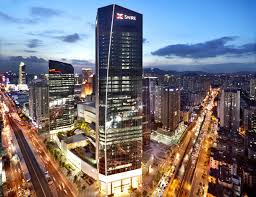
In Shanghai the view from the Bund towards (China’s original ghost town it should be remembered) Pudong and the Liujiazui finance district was always impressive. However, with the addition of China’s tallest building (also home to the world’s fastest elevator) the Shanghai Tower it’s now breath-taking. There’s an observation deck on 118th floor (the world’s highest) and to visit this and look at the city-scape at night is to experience a sensation for which only the words ‘truly’ and ‘awesome’ will do. [Enjoy the Liujiazui view in comfort at one of Shanghai’s best restaurants M on the Bund. Still there and doing a roaring trade on the Monday evening of my visit. The crispy pig never gets old].
In the old part of town a multi-year makeover remains in progress and your accommodation choices are manifold and, at the high end, truly world class. No longer does ‘Shangri-La standard’ set the benchmark for luxury lodging in China (gopping lobby, chandeliers, superfluous ivory tickler). I stayed at the Puli, a home grown offering and hotel that, like many, claims to be an urban oasis; but in this case really is.
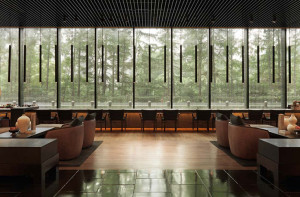
Retail, Growing Up
If you do make it to the One Link Plaza in Guangzhou you’ll find, on three floors, the OCE (Original Color Edition) ‘Flagship’ store. I came across this brand first in Wuhan and they now have branches (in addition to Guangzhou and Wuhan) in Shanghai, Suzhou, Hangzhou, Chengdu, Chongqing, Changsha, Zhengzhou, Yantai, Nanjing, Changde, Zhuzhou, Chenzhou and Changsha; truly a nationwide operation. The best way to describe OCE would be as a lifestyle-concept-store. Think a thoughtfully edited version of Ikea and/or Zara Home (Hong Kong readers, think G.O.D.). Their products are stylish, well made, affordable with a strong whiff of Skandi-land. This is a telling development that such a store can thrive, and in so many locations, in a country that in living memory was getting by, in many cases quite literally, from hand to mouth.
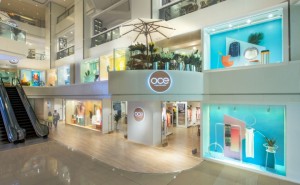
If you stay at the Puli in Shanghai you’ll be connected to the Réel Mall. High end retailing doesn’t get slicker. Downstairs there’s the kind of F+B complex that makes a visit to either a Mitsukoshi in Tokyo or a Shinsegae in Seoul compulsory. On the higher floors the international brands are there but not simply plonked down as in Chinese department stores of yore. They’ve been skillfully curated and make for an interesting tour. On higher floors there are cafes that draw shoppers up and being airy and spacious encourage them to stay. One floor is almost wholly dedicated to a series of workshops where you’re encouraged to try your hand at pottery, leather and wood working, jewellery making and other hands-on activities. Again, as with the OCE stores, this mall speaks volumes in terms of how local shoppers’ tastes, sophistication and interests have progressed.
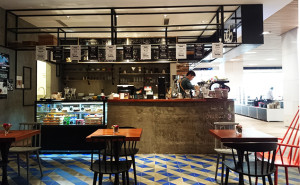
A final note on retail. A visit to China in the past often resulted in the purchase of random items just to admire the wackiness of the packaging. As shoppers had little choice about what goods they could obtain the often large SOEs producing these variously shoddy goods didn’t pay too much attention to their look and feel. All change. Domestic brands now come in attractive packaging, are positioned to entice and compete hard for consumer’s attention. Here a whiff of Japan Inc. can be detected but logos, mascots and trade marks are clearly evolving strong local identities.
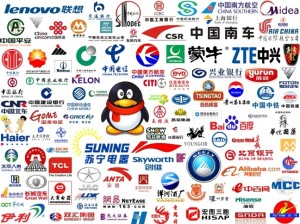
Strength And Depth
I traveled to satellite towns near Guangzhou (one such ‘town’ containing a mere 8m souls!) and a large suburban shopping complex in Shanghai. Because of the transportation networks, just as in Europe and America before them, China’s well heeled are happy to trade distance from the town center for lifestyle and space improvement. Services are therefore compelled to follow.
These days, compared to my experience ten or fifteen years ago, as you travel away from city centers you don’t fall off a development cliff. You now find clusters of smart new-build (London’s Clapham must have been like this 100-years ago?) with a full range of educational, medical and retail services to serve new arrivals. I was surprised to find, in the mall in Shanghai I visited at the very end of subway line #10 (on top of Xinjinwangcheng station), signs announcing the imminent arrival of both Uniqlo and H+M.
This Is What We Fought A Revolution For?
At one of my interviews I heard an amusing anecdote about Guangzhou’s White Swan Hotel. When completed, in 1983, invited Party cadres were seen weeping. Not at the lavish decoration and five-star facilities now brightening up their otherwise drab city; no, at the elitist accommodation that would in future serve as a sign that China was no longer committed to an egalitarian society. Is this, they lamented, what we fought a revolution for?
Fast forward to today. Are those cadres are still wondering whether their sacrifice was worth it? If we could meet, I’d invite them to Shanghai. At the top of the Shanghai Tower and pointing at the Liujiazui skyline I’d like to say something like “Gentlemen, take a bow. This is rather more worthy of sacrifice than the White Swan Hotel!”
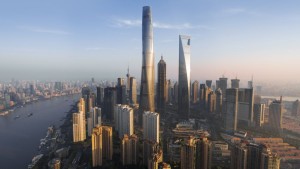
In Conclusion
Unbelievably, there’s still a large group of analysts and commentators that would have you believe China is some kind of Potemkin Village. These folk need to take a trip and better inform themselves; it isn’t.
As I said at the top of this note a visit to China can only ever be to peer through the letterbox and extrapolation with conviction from such an inspection on national trends would be a mistake.
However, with a now near forty-year track record of relentless progress what do we think the chances are of China building further on the development successes of it’s greatest cities and these trends continuing to fan out across the nation? I, for one at least, think those chances are pretty high.